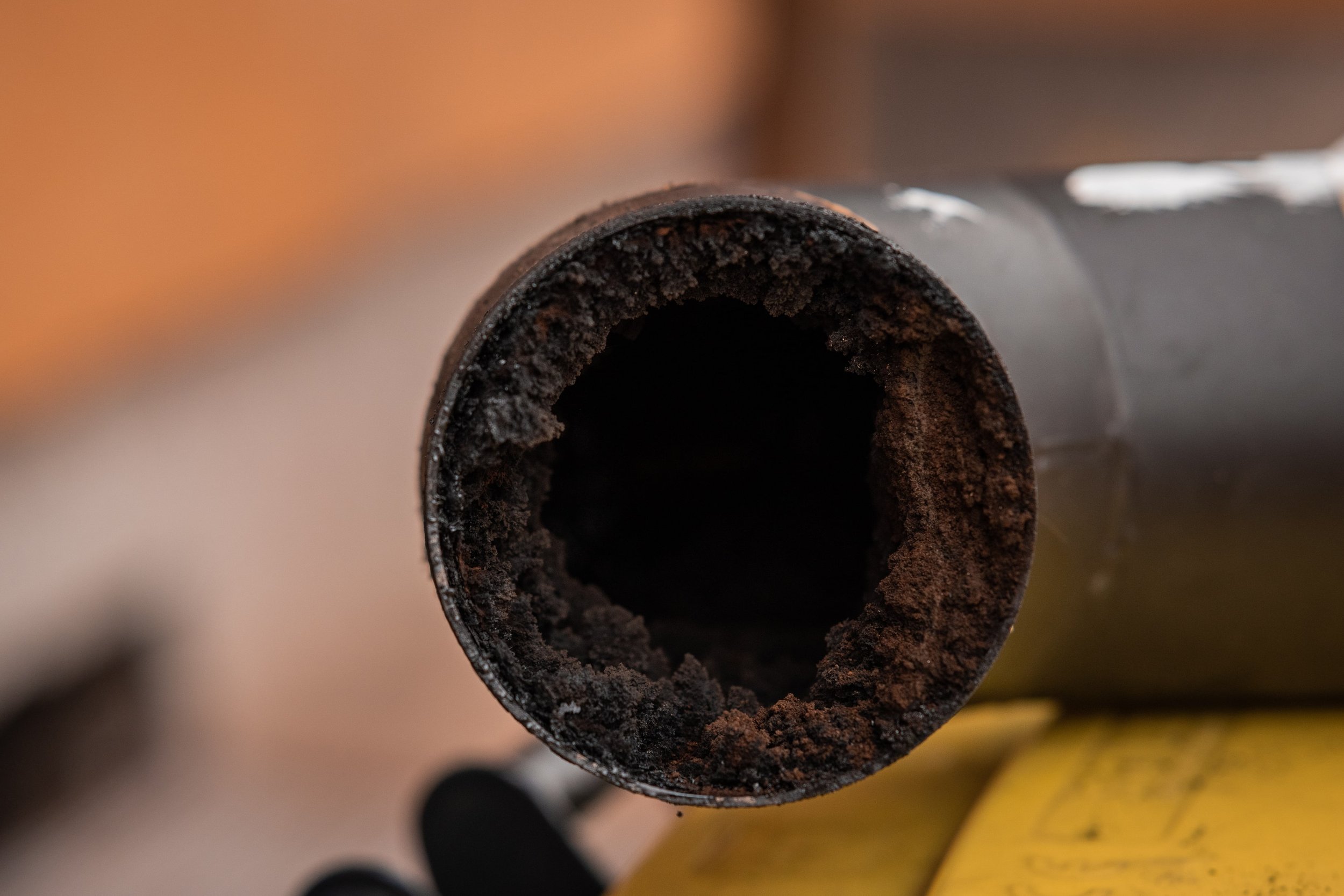What is Creosote and Why is It Dangerous?
If you use a wood-burning fireplace, chances are you’ve heard of creosote. This sticky, tar-like substance is a natural byproduct of burning wood, but it can quickly become a serious hazard if not managed properly. Understanding what creosote is and why it’s dangerous is key to keeping your home safe and your fireplace functioning efficiently.
What is Creosote?
Creosote forms when wood is burned incompletely. As smoke rises through the cooler upper parts of the chimney, it condenses and leaves behind layers of creosote inside the flue. This residue can appear in various stages:
1. Stage 1: Flaky and Sooty
The initial creosote buildup is light and easy to clean. It has a flaky, soot-like consistency and can often be removed with a standard chimney sweep.
2. Stage 2: Sticky and Tar-like
Over time, as more fires are burned, creosote becomes stickier and thicker. This stage is more difficult to remove and may require specialized equipment.
3. Stage 3: Hardened and Glazed
If left untreated, creosote hardens into a shiny, glazed form that clings tightly to the chimney walls. This stage is extremely dangerous and difficult to remove.
Why is Creosote Dangerous?
Fire Hazard
The biggest danger of creosote is its high flammability. Creosote can ignite at temperatures as low as 451°F, and once it catches fire, it burns extremely hot, often leading to uncontrollable chimney fires. These fires can spread quickly, causing severe damage to your home and putting your family at risk.
According to the U.S. Fire Administration, chimney fires account for about 25,000 house fires annually, with creosote buildup being the leading cause.
Restricted Airflow
Creosote buildup also restricts airflow in the chimney. As the creosote thickens, it narrows the passageway for smoke and gases to exit your home. This can lead to backdrafts, where smoke enters your living space instead of being properly vented outside. Not only is this unpleasant, but it can also expose you to harmful gases like carbon monoxide.
Carbon Monoxide Poisoning
Carbon monoxide (CO) is a colorless, odorless gas produced during combustion. When creosote restricts airflow, CO may not be vented properly and could accumulate inside your home. Prolonged exposure to carbon monoxide can cause symptoms like headaches, dizziness, confusion, and in extreme cases, can be fatal. Regular chimney cleaning helps prevent this risk.
What Causes Creosote Buildup?
Several factors contribute to the accumulation of creosote in your chimney:
• Burning Unseasoned Wood
Freshly cut or “green” wood contains more moisture than seasoned wood. When burned, this moisture cools the smoke, leading to more condensation and creosote formation. To reduce creosote buildup, always burn well-seasoned hardwood like oak or maple.
• Cool Flue Temperatures
If your chimney flue is too cool, smoke condenses more quickly, increasing creosote deposits. This can happen if the chimney is poorly insulated or if you burn small, smoldering fires instead of hotter, more efficient ones.
• Restricted Airflow
Poor airflow inside your chimney—whether due to blockages, a closed damper, or inefficient fires—causes smoke to linger and increases creosote formation. Ensuring proper ventilation helps reduce this risk.
How Can You Prevent Creosote Buildup?
To minimize creosote accumulation and keep your chimney safe:
1. Schedule Regular Chimney Sweeps
Having your chimney inspected and cleaned at least once a year is the best way to prevent creosote buildup from reaching dangerous levels. Professional chimney sweeps have the tools and expertise to remove even hardened, glazed creosote.
2. Burn Seasoned Wood
Use only seasoned, dry hardwood in your fireplace to reduce moisture in the smoke and minimize creosote formation.
3. Ensure Proper Airflow
Keep your damper fully open while burning a fire and avoid smoldering fires. Adequate ventilation allows smoke to exit efficiently and reduces the chances of creosote buildup .
4. Install a Chimney Cap
A chimney cap keeps debris, animals, and excess moisture out of your chimney, all of which can contribute to creosote accumulation.
Keep Your Chimney Safe with Regular Maintenance
Creosote is an unavoidable part of using a wood-burning fireplace, but its dangers can be easily managed with proper care. By scheduling regular cleanings with the chimney professionals at Canterbury Chimney Sweeps and following best practices, you can keep your fireplace safe and enjoy the warmth of a fire without worry.
If you suspect creosote buildup in your chimney, don’t wait—contact Canterbury Chimney Sweeps today for an inspection and professional cleaning.

